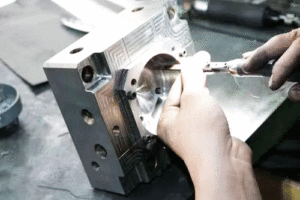
Polishing Treatment for Plastic Molds
Polishing Treatment for Plastic Molds With the widespread application of plastic products, such as daily-use items and beverage packaging containers, there is often a requirement
Although the drying of plastic particles is a relatively simple process. But in some cases, the particles cannot be dried completely.
The factors that affect the drying :
Heat is the key to opening the joint force between water molecules and hygroscopic polymers. When it’s higher than a certain temperature, the attraction between water molecules and polymer chain will be greatly reduced. Besides, the water vapor will be taken away by the dry air.
In the dryer, the humid air is first removed, so the residual moisture (dew point) will be low. Then, heat the air to reduce its relative humidity. At this time, the vapor pressure of dry air is low. By heating, the water molecules inside the particles get rid of the binding force and diffuse to the air.
In the air around the particles, it takes a certain time for the absorption of heat and the diffusion of water molecules to the surface of the particles. Therefore, resin suppliers should specify the time it takes for a material to dry effectively at the proper temperature and dew point.
The dried hot air transfers the heat to the particles in the drying silo, removes the moisture on the surface of the particles, and then sends the moisture back to the dryer. Therefore, there must be sufficient air flow to heat the resin to the drying temperature and maintain this temperature for a certain period of time.
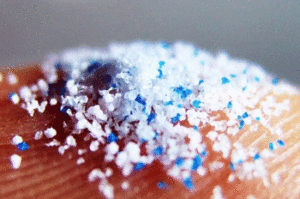
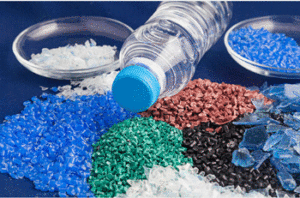
When the problem of poor drying occurs, we should find the problem from the following three aspects.
When inspecting the dryer, pay special attention to the air filter and hose. A clogged filter or flattened hose will reduce the air flow, thus affecting the operation of the dryer.
A damaged filter will contaminate the desiccant, inhibiting its ability to absorb moisture. A broken hose may introduce moist air into the drying air flow. And that causes the desiccant to absorb moisture prematurely and high dew point. Poorly insulated hoses and dry-material silo also affect the drying temperature.
In the dry gas path, the drying temperature should be detected at the inlet of the silo to compensate for the heat loss of the dryer in the hose. The air temperature at the inlet of the bunker is low. And this may for the reasons of improper adjustment of the controller and lack of insulation layer, or the failures of heater element, heater current contactor, thermocouple or controller. In addition, it is also important to monitor the drying temperature throughout the drying process. Observing the temperature fluctuations during desiccant replacement is also significant.
If the material is not properly dried after coming out of the dryer, you should check whether the drying bin has enough space to provide sufficient and effective drying time. Effective drying time refers to the time when the particles are actually exposed to the appropriate drying temperature and dew point. If the residence time of the granules in the silo is insufficient, they can’t be dried properly. Therefore, we should pay attention to the size and shape of the granular material or crushed material, which will affect the bulk density and residence time of the dried material.
A twisted hose or a clogged filter can restrict airflow and affect the performance of the dryer. Therefore, if such problems are not found in the dryer, it is impossible to judge whether the airflow is sufficient. Here, there is a quick, simple, and accurate method to detect whether the airflow of the dryer is sufficient. That is, to measure the vertical temperature curve of the material in the drying bin.
It is assumed that the material supplier’s recommended drying time is 4h and the processing capacity is 100lb/h (1lb=0.4536Kg). To determine whether the airflow of the dryer is sufficient, you can measure the temperature curve in the drying bin. Here, pay special attention to the temperature at 4h (400lb). If the temperature at the 400 lb level in the drying bin reaches the set value, then the air flow can be sufficient.
If only the materials at 1h, 2h or 3h are fully heated in the drying silo, it means that the gas flow cannot complete the heating and drying of the materials at the predetermined yield. Insufficient heating may indicate that for this productivity, the drying silo is too small, or the airflow is restricted due to clogged filters or damaged hoses. If the air volume is too large, there will be problems. For example, it not only wastes energy, but also causes the temperature of the return air to be high and destroys the performance of the desiccant.
The return air filter can prevent the filamentous material from contaminating the desiccant and affecting its hygroscopic performance. These filters must be kept clean to ensure adequate airflow.
When the drying air comes out of the top of the dryer, most of the heat has been released. When the desiccant temperature is in the range of 120oF ~ 150oF, most dryers can work efficiently. If the return air overheats the desiccant, it will reduce its ability to adsorb moisture in the dry air.
Always check the return air temperature of the dryer. When the temperature of the return air is high, it may indicate that for this productivity, the size of the dryer is too large, or the temperature when the material enters the drying bin is high. For example, PET has crystallized before drying. Or the drying temperature of certain materials (such as PET ) is higher than the normal temperature range. In order to prevent the return air temperature from becoming high, install a heat exchanger on the return air path. So it can ensure that the desiccant can effectively remove the moisture in the dry air.
The moisture absorption capacity of the desiccant is limited, so the moisture it absorbs must be removed by regeneration.
The process is:
When the air is sucked in, it enters the blower through a filter and is then sent to a group of heaters. The heated air passes through the desiccant bed. When the temperature of the desiccant rises, the absorbed moisture is released. After the hot air is saturated with water vapor, it is discharged into the atmosphere. The high-temperature regenerated desiccant must be cooled before returning to the drying loop to restore the desiccant’s moisture absorption function.
The dew point reading can help find some problems. So you should monitor the dry air dew point value throughout the drying process. The dew point reading of the dryer during normal operation should be a straight line within the range of 20oF ~ 50oF. Of course, the small fluctuations caused by the replacement of the desiccant are normal. If the dryer is operating normally, the dew point at the dry air inlet should be at least 30oF lower than the dew point at the return air outlet.
After the desiccant is replaced, the dew point immediately reaches a peak. It indicates that the desiccant is not cooled sufficiently before being put in, making it unable to absorb moisture well. After cooling, the dew point of the desiccant will drop to the normal standard. If the desiccant is not properly cooled, the temperature will peak. And the sudden temperature change will reduce the drying ability of the desiccant on heat-sensitive materials such as ionomers, amorphous polyester and certain nylon brands.
If the dew point reading is normal after the desiccant bed is replaced, but the dew point rises quickly before the desiccant drying cycle ends. This may indicate ambient air may have entered the closed air path, causing the desiccant to absorb moisture prematurely. Another possibility is that the desiccant regeneration is incomplete or contaminated. If the dew point reading and the return air dew point reading are close, it indicates that the regeneration air circuit is completely invalid or the desiccant is seriously polluted.
After reading this article, will you try the solutions for the poor drying mentioned above? And have you got any other great ideas?

Polishing Treatment for Plastic Molds With the widespread application of plastic products, such as daily-use items and beverage packaging containers, there is often a requirement
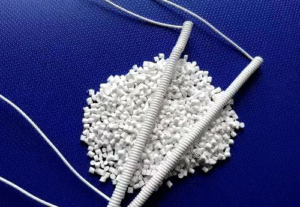
Injection Molding Techniques for TPE and TPR Injection Molding Techniques for TPE and TPR 1. Dry the TPE and TPR material before injection molding It

Winter Maintenance Measures for Injection Molding Machines As winter approaches and temperatures gradually drop, a cold chill envelops the earth. While ensuring personal warmth, it
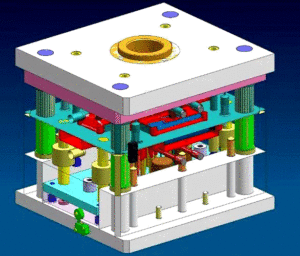
Assessment Regulations for Mold Trial Exceeding 3 Times Assessment Regulations for Mold Trial 1. Purpose The purpose of this regulation is to standardize the work of